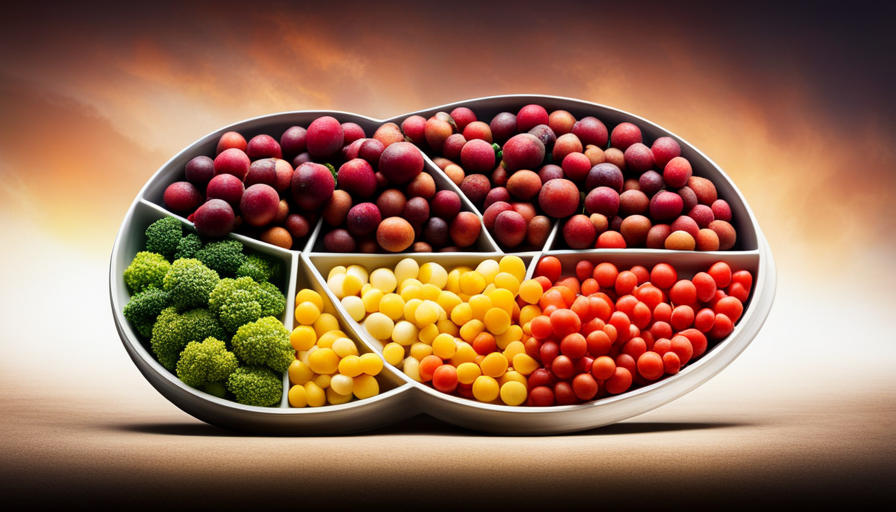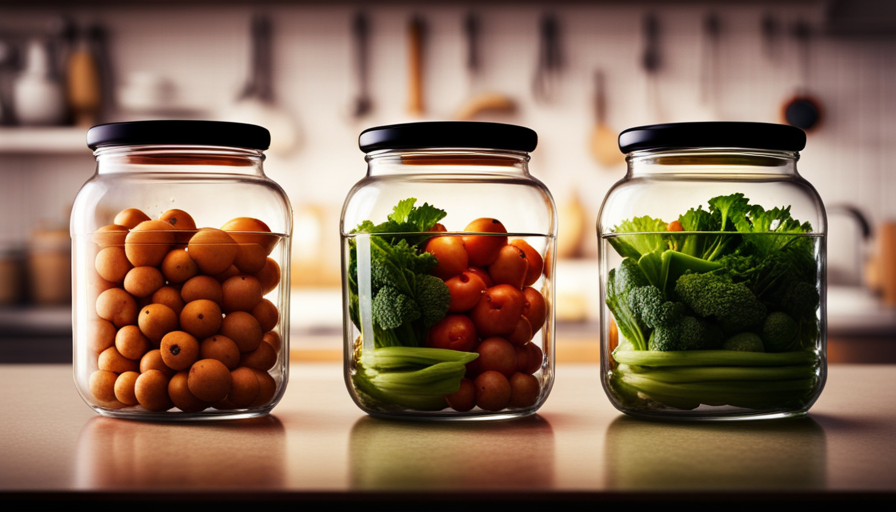In the ever-evolving realm of coffee making, precision and accuracy are key. The Acaia Pearl Brewing Scale has revolutionized the coffee scale market, offering enthusiasts a cutting-edge tool to enhance their brewing skills.
This compact and portable scale boasts a multitude of features that set it apart from its competitors. With a remarkable readability of 0.1g and a lightning-fast response time of 20ms, the Acaia Pearl provides users with real-time and precise measurements. Its adjustable zero tracking capabilities further enhance its accuracy, ensuring consistent and reliable results. Additionally, the scale’s sleek and minimalistic design, complete with an LED display, adds a touch of modernity to any coffee brewing setup.
Not only does the Acaia Pearl offer exceptional performance, but it also boasts a maximum weight capacity of 70.55 oz / 2 kg, making it suitable for a wide range of brewing needs. Furthermore, its versatility is exemplified by its six different modes for weighing, timing, and more.
Moreover, the Acaia Pearl can be seamlessly connected to Acaia apps via Bluetooth, enabling users to create and share their own recipes. This connectivity, coupled with the scale’s long-lasting rechargeable battery, ensures uninterrupted use and convenience.
Recognized for its innovation and excellence, the Acaia Pearl Brewing Scale has garnered accolades, including the prestigious best product award at the SCAA Expo in 2014. While it may not be necessary for those on a budget or not utilizing the app features, coffee lovers seeking the utmost quality in their brewing experience can confidently rely on the Acaia Pearl.
In this article, we will delve into the features and functions of the Acaia Pearl, exploring how it has disrupted the coffee scale market. We will also examine user reviews and recommendations, providing a comprehensive analysis of this exceptional brewing scale.
Key Takeaways
- The Acaia Pearl Brewing Scale is a disruptor in the coffee scale market, offering precise measurements and adjustable zero tracking.
- It has a minimalistic aesthetic with a portable design that fits in drawers, making it convenient for coffee lovers.
- The scale has a maximum weight capacity of 70.55 oz / 2 kg and a minimum weight measurement of 0.003 oz / 0.1 g, with 6 different modes for weighing, timing, and more.
- It can connect to Acaia apps via Bluetooth for recipe creation and sharing, making it a favorite among coffee professionals and home brewers.
What Makes it Special?
The Acaia Pearl Brewing Scale stands out in the coffee scale market due to its precise measurements, adjustable zero tracking, 0.1g readability, and 20ms response time, making it a preferred choice for coffee enthusiasts seeking the best quality in their brewing process.
The incorporation of smart technology sets it apart from its competitors, allowing it to connect to Acaia apps via Bluetooth for recipe creation and sharing. This feature enhances the user experience by providing real-time flow rate, weight, and timer information on its interactive display.
While there are other scales on the market, such as the Hario Drip Scale and Bonavita Scale, the Acaia Pearl’s sleek and minimalistic design, along with its compatibility with larger coffee makers like Chemex, makes it a top choice for coffee professionals and home brewers alike.
Its 2-year warranty and long-lasting rechargeable battery further solidify its status as the best coffee brewing scale in the world.
Features and Functions
With its precise measurements and adjustable zero tracking, the Acaia Pearl Brewing Scale offers a seamless brewing experience akin to a perfectly orchestrated symphony. Its 0.1g readability and 20ms response time ensure accurate measurements, while the portable design allows for easy storage. The scale’s minimalistic aesthetic and LED display provide a sleek and attractive appearance.
It offers six different modes for weighing, timing, and more, making it versatile for various brewing techniques. Additionally, the scale can connect to Acaia apps via Bluetooth, allowing for recipe creation and sharing. However, the Acaia Pearl Brewing Scale may not be necessary for those not using the app or on a budget. Alternatives such as the Hario Drip Scale and Bonavita Scale are also recommended.
Nonetheless, the Acaia Pearl Brewing Scale is widely regarded as the best coffee brewing scale in the world and is loved by coffee professionals and home brewers alike.
User Reviews and Recommendations
User reviews and recommendations for the Acaia Pearl Brewing Scale highlight its precise measurements, versatile modes, and seamless brewing experience. The scale’s 0.1g readability and adjustable zero tracking ensure accurate measurements, allowing users to achieve consistent brewing results.
Additionally, the scale offers six different modes for weighing, timing, and more, making it suitable for various brewing techniques.
Pros:
- Precise measurements and adjustable zero tracking
- Versatile modes for different brewing techniques
- Seamless brewing experience
Cons:
- Not recommended for those not using the app or seeking a budget-friendly option
When compared to other scales, such as the Hario Drip Scale and Bonavita Scale, the Acaia Pearl stands out for its sleek and minimalistic design, as well as its compatibility with larger coffee makers like Chemex.
While it may not be necessary for those not using the app or on a budget, the Acaia Pearl is highly recommended for coffee enthusiasts seeking the best quality and those wanting to explore the interactive features of the app.
Frequently Asked Questions
How does the Acaia Pearl Brewing Scale compare to other coffee scales on the market?
The Acaia Pearl brewing scale stands out among its competitors with its precise measurements, adjustable zero tracking, and minimalistic aesthetic. With a 0.1g readability and 20ms response time, it offers accurate and quick measurements.
The scale’s portable design and compatibility with larger coffee makers like Chemex make it convenient for both coffee shops and home brewing. Additionally, its connectivity to Acaia apps via Bluetooth allows for recipe creation and sharing. However, it may not be necessary for those not using the app or on a budget.
Other recommended scales include the Hario Drip Scale and Bonavita Scale.
Can the Acaia Pearl Brewing Scale be used for purposes other than coffee brewing?
The Acaia Pearl brewing scale offers a range of alternative uses beyond coffee brewing. Due to its precise measurements and adjustable zero tracking, it can be utilized in various scenarios that require accurate weighing.
For example, it can be used in the kitchen for measuring ingredients while cooking or baking. Additionally, its portable and compact design makes it suitable for weighing small items such as jewelry or even postage.
The Acaia Pearl brewing scale’s versatility and accuracy make it a beneficial tool for non-coffee related purposes.
Is the Acaia Pearl Brewing Scale compatible with all types of coffee makers?
The Acaia Pearl brewing scale is compatible with various types of coffee makers, including larger ones like Chemex. Its versatile design and adjustable zero tracking feature make it suitable for different brewing methods.
While it is primarily marketed as a coffee scale, the Acaia Pearl can also be used for other purposes beyond coffee brewing. Its precise measurements, adjustable zero tracking, and multiple weighing modes make it a useful tool for measuring ingredients in other culinary applications as well.
How long does the battery of the Acaia Pearl Brewing Scale last?
The battery life of the Acaia Pearl brewing scale is a crucial aspect to consider for users. To extend the battery life, it is essential to adopt certain measures.
The Acaia Pearl brewing scale utilizes a long-lasting lithium-ion battery that can operate for approximately 20-30 hours.
To optimize battery life, users can ensure that the scale is turned off when not in use, charge it fully before initial use, and avoid overcharging.
These practices will help users maximize the longevity of the Acaia Pearl brewing scale’s battery.
Are there any additional accessories or add-ons available for the Acaia Pearl Brewing Scale?
Additional accessories and add-ons are available for the Acaia Pearl brewing scale.
These include:
- A heat-resistant pad, which provides a safe surface for placing hot brewing equipment.
- A silicone protective case, which helps protect the scale from scratches and damage.
- A weighing plate and a portafilter weighing plate, which provide additional stability and support for different brewing methods.
These accessories enhance the functionality and versatility of the Acaia Pearl brewing scale for coffee enthusiasts and professionals.
How Does the Acaia Pearl Impact the Coffee Culture and Community?
The Acaia Pearl has made a significant impact on the coffee culture and community. With its precise measurements and sleek design, it has become a staple tool for baristas and coffee aficionados alike. As the demand for quality coffee grows, the Acaia Pearl continues to be revered, inspiring quotes about coffee culture.
Conclusion
The Acaia Pearl Brewing Scale has revolutionized the coffee scale market with its precise measurements and adjustable zero tracking capabilities. Its portable and compact design, along with its minimalistic aesthetic, appeals to coffee enthusiasts. With a maximum weight capacity of 70.55 oz / 2 kg and a minimum weight measurement of 0.003 oz / 0.1 g, it caters to various brewing needs.
The scale’s connectivity to Acaia apps via Bluetooth allows for recipe creation and sharing. While highly recommended for coffee lovers seeking the best quality, it may not be necessary for those on a budget or not utilizing the app. Other recommended scales in the market include the Hario Drip Scale and Bonavita Scale.
Overall, the Acaia Pearl Brewing Scale offers a range of features and functions that make it a top choice for coffee enthusiasts.










